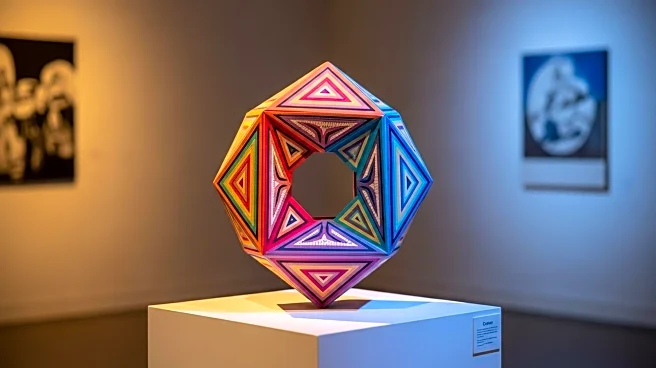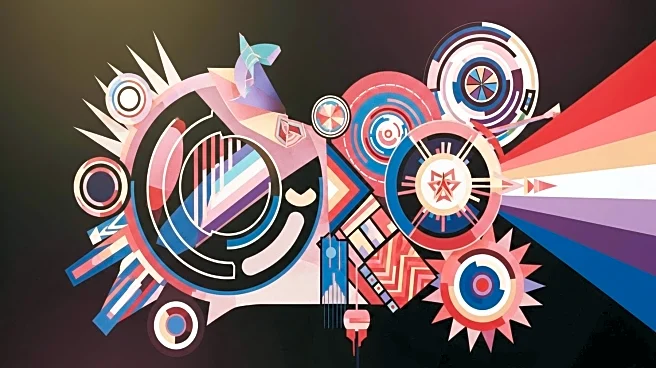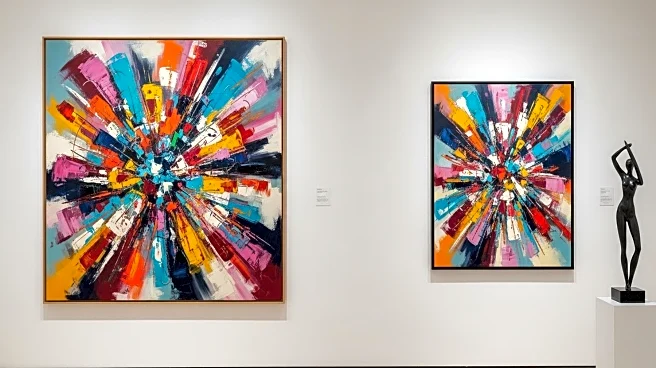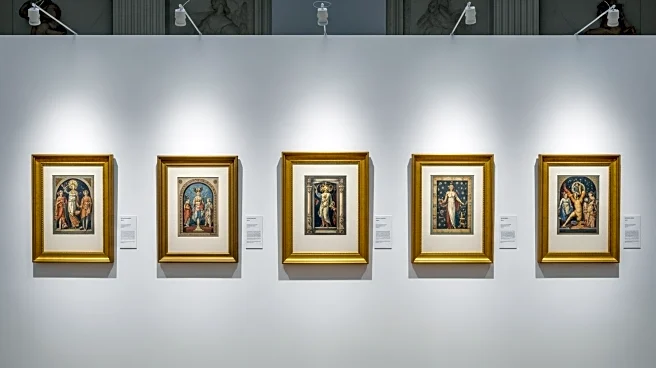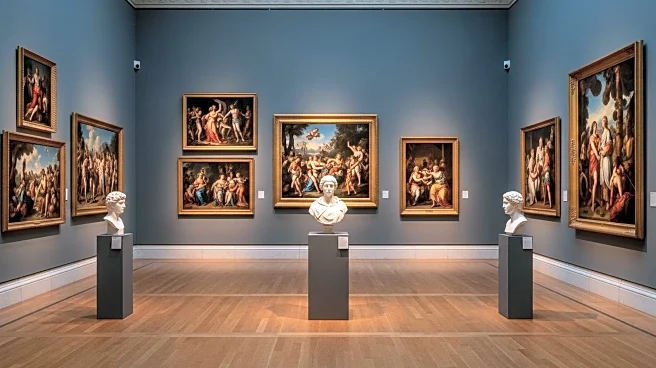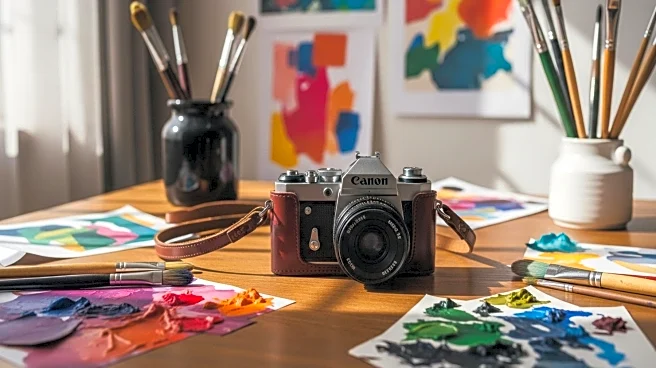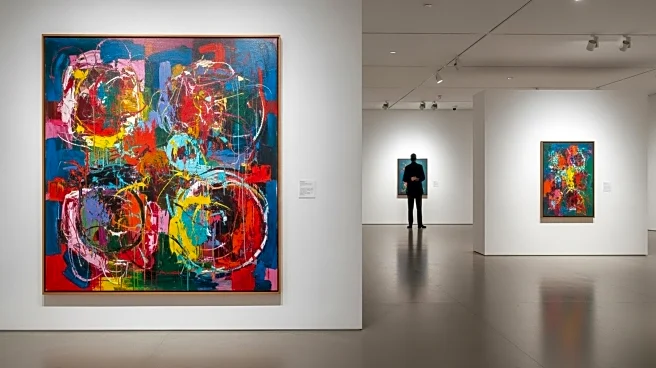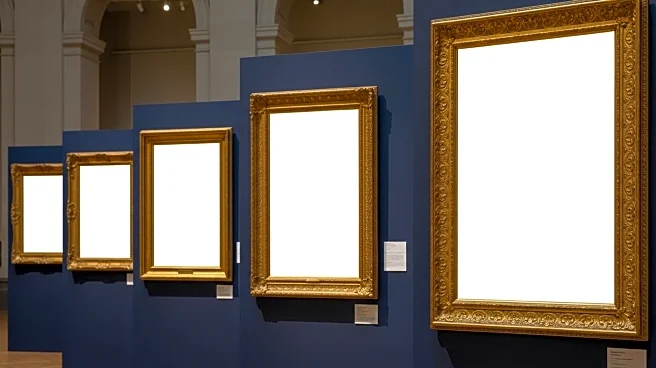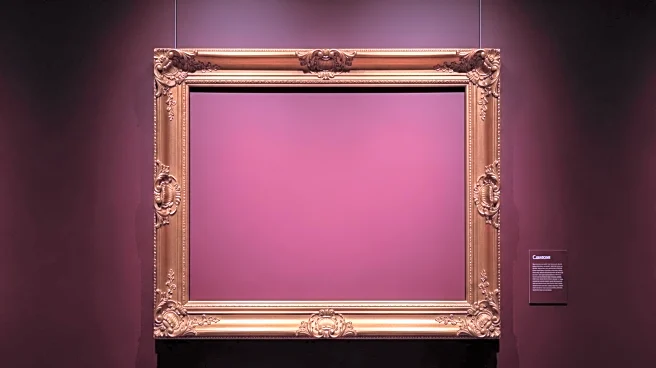What is the story about?
What's Happening?
Jeffrey Gibson, an artist of Choctaw and Cherokee descent, is known for his interdisciplinary art that combines Indigenous languages, queer aesthetics, and diverse materials. His work challenges traditional art world norms and stereotypes about Indigenous culture. Gibson's art spans painting, sculpture, performance, and video, and is characterized by vibrant colors and patterns. He is currently involved in several exhibitions, including the US Pavilion at the Venice Biennale and shows at the Metropolitan Museum of Art and MASS MoCA. His work often reflects on themes of identity, history, and cultural critique, engaging with popular music and literature.
Why It's Important?
Gibson's work is significant as it offers a radical perspective on Indigenous and queer identities within the contemporary art scene. By confronting stereotypes and biases, Gibson's art encourages dialogue about cultural representation and inclusivity. His exhibitions in major art institutions like the Metropolitan Museum of Art and Venice Biennale highlight the growing recognition and importance of diverse voices in the art world. Gibson's approach not only enriches the cultural landscape but also challenges viewers to reconsider preconceived notions about art and identity.
Beyond the Headlines
Gibson's art raises important questions about the intersection of culture, identity, and art. His use of Indigenous languages and queer aesthetics invites viewers to explore complex narratives and histories. The ethical implications of his work involve a deeper understanding of cultural appropriation and representation. By subverting traditional art forms, Gibson's work contributes to a broader movement towards inclusivity and diversity in the arts, potentially influencing future generations of artists and cultural institutions.
AI Generated Content
Do you find this article useful?
